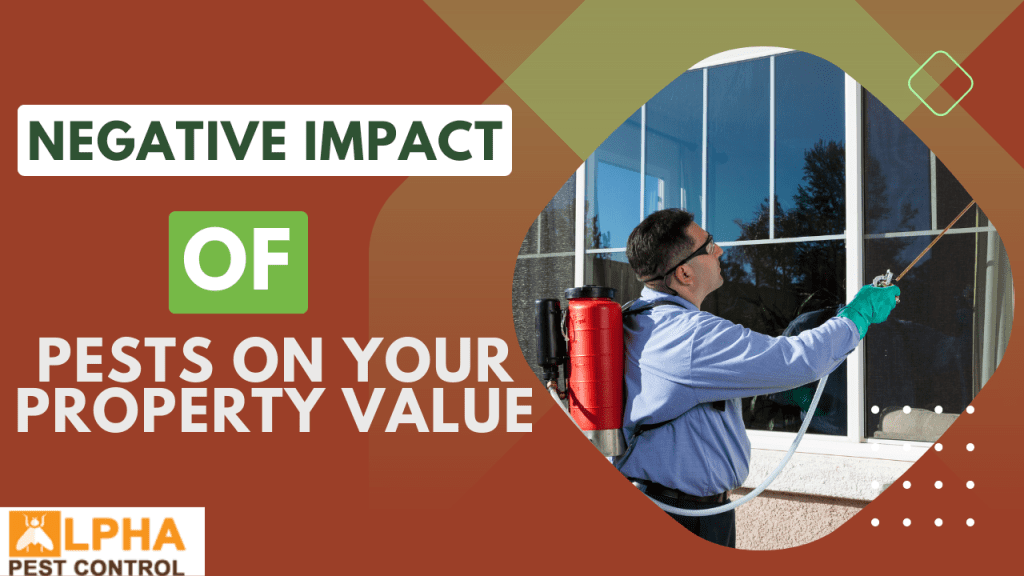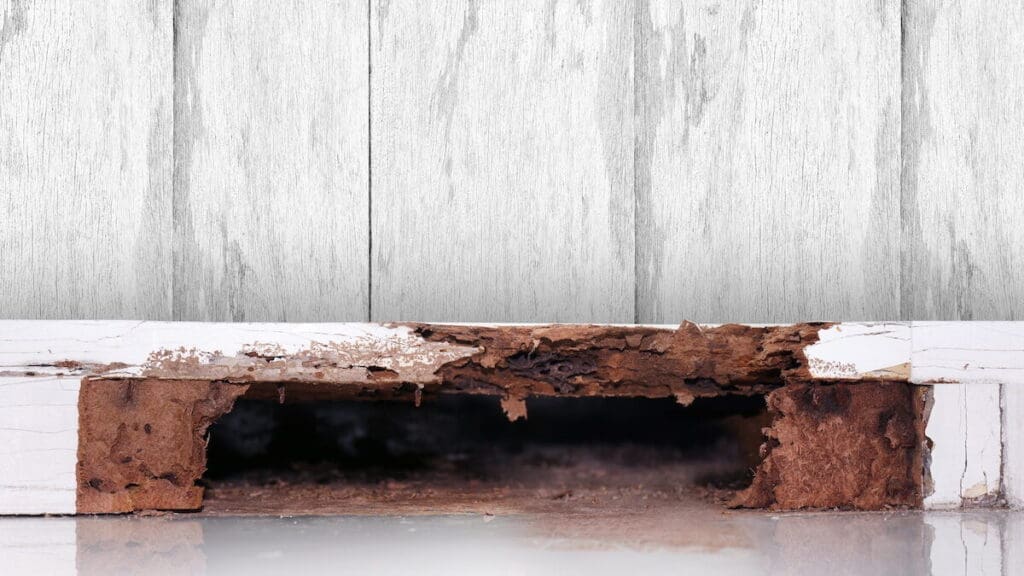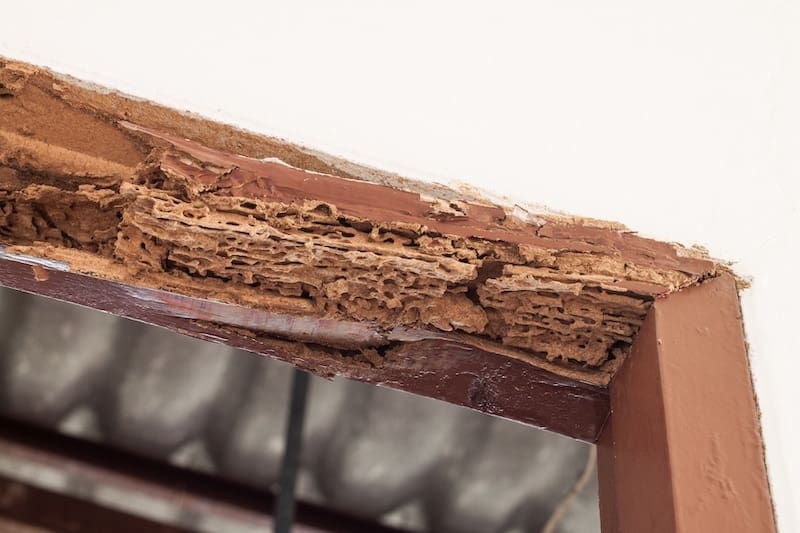When it comes to buying or selling a property, there are numerous factors that can influence its value. While most people consider location, size, and condition, one factor that often gets overlooked is the presence of pests. Pest infestations can have a significant impact on real estate value, affecting not only the price but also the desirability of a property. In this article, we will explore how pests can diminish the value of a property and why it’s crucial to address these issues before entering the real estate market. So, if you’re curious to learn how pests can impact the value of your home or investment property, keep reading!
1. Introduction
1.1 Definition of pests
Pests refer to insects, rodents, or other animals that are unwanted or harmful to humans or their property. They can cause damage to structures, pose health risks, and create unhygienic conditions when infesting residential or commercial properties.
1.2 Importance of assessing pest impact on real estate value
Assessing the impact of pests on real estate value is crucial for both buyers and sellers. Pests can significantly affect the overall value of a property, and understanding these effects can help inform purchasing decisions or guide sellers in addressing and disclosing pest-related issues.
1.3 Purpose of the article
The purpose of this article is to provide a comprehensive understanding of the types of pests commonly found in real estate, the risks and damages they can cause, the available pest control solutions, and the financial and legal implications of pest infestations on property value. By delving into these topics, readers will be equipped with the knowledge needed to make informed decisions regarding pest control in real estate transactions.
2. Types of Pests
2.1 Termites
Termites are notorious for their ability to cause extensive damage to wooden structures. They feed on cellulose found in wood and other organic materials, weakening the structural integrity of buildings. Early detection and professional termite control are essential to prevent costly repairs.
2.2 Rodents
Rodents, such as rats and mice, can cause significant damage to properties by chewing through wiring, insulation, and building materials. They also contaminate food and spread diseases, making them a health hazard. Proper rodent control measures, including sealing entry points, are crucial to prevent infestations.
2.3 Ants
Ants can invade homes in search of food and water. While some ant species are merely a nuisance, others, like carpenter ants, can cause structural damage by nesting in wood. Effective ant control involves eliminating food sources, sealing entry points, and implementing targeted treatments.
2.4 Bed Bugs
Bed bugs are small insects that infest mattresses, furniture, and other areas where people sleep. They feed on blood and can cause severe discomfort and allergic reactions. Professional bed bug extermination is necessary to eliminate infestations and ensure a pest-free environment.
2.5 Cockroaches
Cockroaches are resilient pests that multiply rapidly and spread diseases. They are commonly found in kitchens, bathrooms, and other areas with food and moisture. Proper sanitation, exclusion methods, and targeted treatments are crucial for effective cockroach control.
2.6 Bees and Wasps
Bees and wasps can pose a threat to human safety, especially for individuals with allergies. Their nests can be found in walls, attics, and outdoor structures. Professional removal or relocation of bee and wasp nests is essential to maintain a safe environment.
2.7 Mosquitoes
Mosquitoes not only cause irritating bites but also transmit diseases such as West Nile virus and dengue fever. Proper mosquito control includes eliminating standing water, using repellents, and implementing targeted treatments to reduce their population.
2.8 Flies
Flies are not only bothersome but can also carry disease-causing organisms. They breed in unsanitary conditions and can quickly become a health hazard. Comprehensive fly control involves proper sanitation, exclusion techniques, and targeted treatments.
2.9 Mice
Similar to rats, mice can cause extensive damage to properties by gnawing through wires, insulation, and other materials. They also contaminate food and spread diseases. Effective mouse control includes sealing entry points, removing food sources, and implementing trapping or baiting methods.
2.10 Spiders
While most spiders are harmless, certain species, like black widows and brown recluses, can cause dangerous bites. Proper spider control involves regular cleaning to reduce hiding spots and the application of targeted treatments if necessary.

3. Risks and Damages
3.1 Structural damages
Pests like termites, rodents, and carpenter ants can cause significant structural damage to properties. They can chew through wood, wiring, insulation, and other building materials, compromising the stability and safety of the structure. Structural repairs can be costly and affect the overall value of the property.
3.2 Health hazards
Some pests, such as rodents and cockroaches, pose health hazards to occupants. They can contaminate food, surfaces, and the air with bacteria, allergens, and pathogens that may cause illnesses. Avoiding health risks associated with pests is crucial for maintaining a safe living or working environment.
3.3 Contamination and hygiene issues
Pests like flies and cockroaches are often found in unsanitary conditions and can spread bacteria and other contaminants, affecting the cleanliness and hygiene of a property. proper pest control measures are necessary to prevent potential health risks and maintain a hygienic environment.
3.4 Allergies and respiratory problems
Certain pests, including dust mites, bed bugs, and some cockroach species, can trigger allergies and respiratory problems. Their presence can worsen asthma symptoms and cause skin irritations. Preventing and addressing pest infestations is crucial for individuals with allergies or underlying respiratory conditions.
3.5 Destruction of belongings
Pests such as clothes moths and silverfish can damage clothing, fabrics, paper documents, and other personal belongings. The cost of replacing or repairing damaged items can add up and impact the value of a property.
3.6 Infestation spread
Pests have the ability to rapidly multiply and spread throughout a property if left unchecked. In multi-unit buildings or neighborhoods, infestations can easily move from one unit to another, causing exasperating problems for both residents and property owners.
4. Pest Control Solutions
4.1 DIY pest control methods
There are various do-it-yourself (DIY) pest control methods available for minor infestations or preventive measures. These may include using traps, baits, sprays, sealing entry points, and improving sanitation practices. However, DIY methods may not be effective for severe or persistent infestations, and professional assistance may be necessary.
4.2 Professional pest control services
Professional pest control services offer the expertise and experience needed to effectively eliminate and prevent pest infestations. They employ specialized equipment, techniques, and treatments tailored to specific pests, ensuring long-term results and peace of mind.
4.3 Integrated Pest Management (IPM) techniques
Integrated Pest Management (IPM) combines various pest control strategies to address infestations in an environmentally friendly and effective manner. By incorporating preventive measures, monitoring, and targeted treatments, IPM focuses on long-term pest prevention and reduces reliance on pesticides.
4.4 Importance of regular inspections
Regular pest inspections, conducted by professionals, help in early detection and prevention of infestations. Timely identification allows for prompt action and minimizes the risk of extensive damages and health hazards associated with pests. Regular inspections are particularly crucial for properties located in high-risk areas.
4.5 Preventive measures
Implementing preventive measures is essential for reducing the risk of pest infestations. These may include sealing entry points, fixing leaks, proper waste management, regular cleaning, and maintaining the landscape. By addressing potential vulnerabilities, property owners can proactively prevent pest problems.

5. Financial Impact
5.1 Decreased property value
Pest infestations can significantly decrease the value of a property. The presence of pests, especially those known to cause structural damages like termites or rodents, can deter potential buyers and negatively impact marketability. Lower demand due to pest issues can result in a decrease in property value.
5.2 Increased repair and maintenance costs
Pest-infested properties require costly repairs and maintenance to restore them to a habitable and functional state. Structural damages caused by pests, such as replacement of damaged wood or electrical wiring, can contribute to increased expenses for property owners.
5.3 Impact on rental and leasing prospects
For landlords or property owners looking to rent or lease their properties, pest problems can deter potential tenants. Occupants are unlikely to choose properties with a history of infestations or ongoing pest issues, leading to vacancies and potential financial losses.
5.4 Longer time on the market
Properties with pest-related issues generally take longer to sell or rent. Potential buyers or tenants are likely to request pest inspection reports and proof of pest control measures before finalizing a transaction. This can prolong the time a property spends on the market, affecting the overall profitability.
5.5 Additional costs for pest control services
Investing in professional pest control services to address infestations can be costly. Property owners may need to allocate additional funds for inspections, treatments, and ongoing preventive measures. These costs can impact profitability and reduce the return on investment.
6. Real Estate Evaluation
6.1 Factors considered during property assessment
During a property assessment, various factors are considered to determine its value. In addition to location, size, and condition, the presence and severity of pest issues are critical factors that can affect the final evaluation.
6.2 Pest damage identification and valuation
Pest damage identification involves assessing the extent of structural damage and the costs associated with repairs. Valuation takes into account the financial implications of pest-related damages, including the cost to remedy the infestation and any necessary restoration work.
6.3 Role of pest inspection reports
Pest inspection reports provide valuable information regarding the presence of pests, previous infestations, and current status. These reports guide property evaluators and potential buyers or tenants in understanding the property’s pest history and any necessary actions required.
6.4 Impact on insurance coverage
Some insurance companies may refuse coverage or increase premiums for properties with a history or ongoing issues with pest infestations. It is important to disclose prior infestations, provide proof of remediation, and educate insurers on preventive measures to maintain appropriate coverage.
6.5 Legal disclosure requirements
In many jurisdictions, sellers and landlords are legally obligated to disclose any known pest issues to potential buyers or tenants. Failure to disclose such information can result in legal consequences and financial liabilities. It is crucial to understand and adhere to local disclosure requirements.

7. Local Factors
7.1 Geographical location
Geographical location plays a significant role in pest prevalence. Certain areas are more prone to specific pests due to climate conditions, geographical features, or vegetation. It is essential to consider local pest risks when evaluating property value and implementing preventive measures.
7.2 Climate and weather conditions
Climate and weather conditions greatly influence pest populations. Warm and humid climates often create favorable environments for pests like mosquitoes and termites. Understanding local climate patterns and associated pest behaviors is essential for effective pest control.
7.3 Surrounding environment
The surrounding environment, such as nearby forests, bodies of water, or fields, can contribute to pest problems. Properties located in close proximity to these habitats may be more susceptible to pest infestations. Assessing the surrounding environment helps property owners proactively address potential pest risks.
7.4 Neighborhood pest history
The history of pest infestations within a neighborhood can have an impact on property value. Areas with recurring or persistent pest issues may create negative perceptions among potential buyers or tenants, affecting demand and overall marketability.
7.5 Impact on property resale
Pest-related issues can impact the resale value of a property. Prospective buyers are likely to consider pest history and current pest control measures when making purchasing decisions. Maintaining a pest-free property increases its desirability and potential profitability.
7.6 Buyer preferences and market trends
Buyer preferences and market trends can influence how pests impact real estate value. For example, as more buyers become environmentally conscious, properties with eco-friendly pest control measures may have a competitive advantage. Understanding buyer preferences and staying informed about market trends can help property owners adapt and address pest issues effectively.
8. Seller’s Responsibilities
8.1 Preparing the property for sale
Sellers have a responsibility to prepare their property for sale, which includes addressing any existing pest issues. Conducting a thorough inspection, addressing repairs, and implementing preventive measures before listing the property can help attract potential buyers and protect the property’s value.
8.2 Obtaining pest inspection and treatment
Sellers should consider obtaining a pest inspection report to assess the property’s pest status. If an infestation is detected, appropriate treatment should be carried out by professional pest control services to eliminate the pests and prevent any further damage.
8.3 Disclosing pest-related issues
Sellers must disclose any known pest-related issues to potential buyers. Disclosures should include details regarding past infestations, treatments performed, and preventive measures taken. This transparency ensures that buyers can make informed decisions and helps avoid legal complications in the future.
8.4 Providing necessary documentation
Sellers should provide potential buyers with necessary documentation, including pest inspection reports, treatment records, and any warranties or guarantees associated with pest control measures. This documentation helps build trust and confidence in the property and demonstrates the seller’s commitment to addressing pest-related concerns.
8.5 Considering buyer negotiations
Pest-related issues may arise during buyer negotiations. Sellers should be open to addressing any concerns raised by potential buyers and be willing to negotiate fair resolutions, such as undertaking additional treatments or offering financial concessions. Cooperation and flexibility can help facilitate a smoother transaction.

9. Buyer’s Considerations
9.1 Importance of pest inspections
Buyers should prioritize conducting pest inspections before finalizing a real estate transaction. This evaluation can identify any existing or potential pest problems and help buyers make informed decisions regarding the property’s condition and value.
9.2 Evaluating the severity of infestation
If a property has a history of pest issues or an ongoing infestation, buyers should evaluate the severity of the problem with the guidance of professionals. Understanding the extent of the infestation will help buyers assess the associated risks and potential costs for remediation.
9.3 Cost estimation for pest control
Buyers should consider the potential costs associated with pest control when evaluating a property. This includes not only the expenses for eliminating existing infestations but also the investment required for ongoing preventive measures and regular inspections.
9.4 Impact on purchasing decision
The presence of pest-related issues should influence a buyer’s purchasing decision. Understanding the risks, damages, and financial implications associated with pests can help buyers assess whether they are willing to manage a property with existing or potential pest problems.
9.5 Negotiating pest-related concerns
Buyers can negotiate with sellers regarding pest-related issues identified during inspections. This may include requesting further treatments, repairs, or financial concessions that appropriately account for the pest-related risks and potential expenses.
10. Conclusion
10.1 Recap of the impact of pests on real estate value
Pests have a significant impact on the value of real estate properties. They can cause structural damages, health hazards, contamination issues, and destruction of belongings. Pest infestations can also result in financial costs, increased repair expenses, longer time on the market, and decreased property value.
10.2 Importance of addressing pests promptly
Promptly addressing pest issues is crucial to mitigate damages and protect property value. Implementing preventive measures, regular inspections, and professional pest control services can help prevent infestations and minimize potential financial and health risks.
10.3 Tips for maintaining a pest-free property
Maintaining a pest-free property involves proper sanitation practices, sealing entry points, regular inspections, and prompt action if any signs of infestation are detected. Consistency in preventive measures and swift response to pest issues contribute to a healthier and more valuable property.
10.4 Encouraging professional pest control assistance
Engaging professional pest control services is highly recommended for effective pest eradication and prevention. Professionals have the knowledge, tools, and experience to address various pest issues, ensuring long-term results and maintaining property value.
10.5 Final thoughts
Understanding the impact of pests on real estate value is crucial for both buyers and sellers. By educating themselves on the types of pests, risks and damages, available control solutions, financial implications, and legal requirements, individuals can make informed decisions and take appropriate actions to protect their investments.


I am Randy, the author behind PestControld.com. Drawing from decades of experience, I aim to provide valuable insights, expert advice, and practical recommendations to help you make informed decisions when assessing viable pest control solutions.